- Home
- Arthur C. Clarke
The Ghost from the Grand Banks (Arthur C. Clarke Collection) Page 18
The Ghost from the Grand Banks (Arthur C. Clarke Collection) Read online
Page 18
Indeed, some regions still showed signs of past improvements. The Martian oceans had dwindled to a few shallow lakes, but the great forests of mutated pines still survived along the equatorial belt. For ages to come, they would maintain and protect the ecology they had been designed to create.
Venus—once called New Eden—had reverted to its former Hell. And of Mercury, nothing remained. The system’s mother lode of heavy metals had been whittled away through millennia of astroengineering. The last remnant of the core—with its unexpected and providential bonus of magnetic monopoles—had been used to build the worldships of the Exodus Fleet.
And Pluto, of course, had been swallowed by the fearsome singularity which the best scientists of the human race were still vainly struggling to comprehend, even as they fled in search of safer suns. There was no trace of this ancient tragedy, when the Seeker fell earthward out of deep space, following an invisible trail.
The interstellar probe that Man had launched toward the Galactic core had reconnoitered a dozen stars before its signals had been intercepted by another civilization. The Seeker knew, to within a few dozen light-years, the origin of the primitive machine whose trajectory it was retracing. It had explored almost a hundred solar systems, and had discovered much. The planet it was approaching now was little different from many others it had inspected; there was no cause for excitement, even if the Seeker had been capable of such an emotion.
The radio spectrum was silent, except for the hiss and crash of the cosmic background. There were none of the glittering networks which covered the nightlands of most technologically developed worlds. Nor, when it entered atmosphere, did the Seeker find the chemical traces of industrial development.
Automatically, it went into the standard search routine. It dissolved into a million components, which scattered over the face of the planet. Some would never return, but would merely send back information. No matter; the Seeker could always create others to replace them. Only its central core was indispensable—and there were backup copies of that, safely stored at right angles to all three dimensions of normal space.
Earth had orbited the sun only a few times before the Seeker had gathered all the easily accessible information about the abandoned planet. It was little enough; megayears of winds and rains had wiped away all man’s cities, and the slow grinding of the tectonic plates had completely changed the patterns of land and sea. Continents had become oceans; seabeds had become plains, which had then been wrinkled into mountains….
…The anomaly was the faintest of echoes on a neutrino scan, but it attracted immediate attention. Nature abhorred straight lines, right angles, repeated patterns—except on the scale of crystals and snowflakes. This was millions of times larger; indeed, it dwarfed the Seeker. It could only be the work of intelligence.
The object lay in the heart of a mountain, beneath kilometers of sedimentary rock. To reach it would require only seconds; to excavate it without doing any damage, and to learn all its secrets, might require months or years.
The scan was repeated, at higher resolution. Now it was observed that the object was made from ferrous alloys of an extremely simple type. No civilization that could build an interstellar probe would have used such crude materials. The Seeker almost felt disappointment….
Yet, primitive though this object was, no other artifact of comparable size or complexity had been found. It might, after all, be worth the trouble of recovering.
The Seeker’s high-level systems considered the problem for many, many microseconds, analyzing all the possibilities that might arise. Presently the Master Correlator made its decision.
“Let us begin.”
SOURCES AND ACKNOWLEDGMENTS
R.M.S. Titanic has haunted me all my life, as is amply demonstrated by this extract from Arthur C. Clarke’s Chronicles of the Strange and Mysterious (Collins, 1987):
“My very first attempt at a full-length science-fiction story (fortunately long since destroyed) concerned that typical disaster of the spaceways, the collision between an interplanetary liner and a large meteorite—or small comet, if you prefer. I was quite proud of the title, Icebergs of Space—never dreaming at the time that such things really existed. I have always been a little too fond of surprise endings. In the last line I revealed the name of the wrecked spaceship. It was—wait for it—Titanic.”
More than four decades later, I returned to the subject in Imperial Earth (1976), bringing the wreck to New York to celebrate the 2276 Quincentennial. At the time of writing, of course, no one knew that the ship was in two badly damaged portions.
Meanwhile I had grown to know Bill MacQuitty, the Irish movie maker (and much else) to whom this book is dedicated. Following the success of his superb A Night to Remember (1958), Bill was determined to film my 1961 novel A Fall of Moondust; however, the Rank Organization refused to dabble in fantasy (men on the Moon, indeed!) and the project was turned down. I am happy to say that the novel is now being turned into a TV mini-series by another close friend, Michael Deakin. If you wonder how we manage to find seas of dust on the moon, stay tuned.
I am also indebted to Bill MacQuitty for photographs, plans, drawings, and documents on R.M.S. Titanic—especially the menu reproduced in Chapter 36, “The Last Lunch.” Bill’s beautiful book Irish Gardens (text by Edward Hyams; Macdonald, London, 1967) also provided much inspiration.
It is pleasant to record that Bill’s director of photography was Geoffrey Unsworth—who, a decade later, also filmed 2001: A Space Odyssey. I can still remember Geoffrey wandering round the set with a slightly bemused expression, telling all and sundry: “I’ve been in this business for forty years—and Stanley’s just taught me something I didn’t know.” Michael Crichton has reminded me that Superman was dedicated to Geoffrey, who died during its production, much mourned by all those who had worked with him.
This novel would not have been possible, of course, without inputs from the two classic books on the subject, Walter Lord’s A Night To Remember (Allen Lane, 1976) and Robert Ballard’s The Discovery of the Titanic (Madison Press Books, 1987), both of which are beyond praise. Two other books I have also found very valuable are Walter Lord’s recent “sequel” The Night Lives On (William Morrow, 1986) and Charles Pellegrino’s Her Name, Titanic (Avon, 1990). I am also extremely grateful to Charlie (who appears in Chapter 43) for a vast amount of technical information about “Bringing up Baby”—an enterprise which we both regard with very mixed feelings.
Martin Gardner’s book The Wreck of the Titanic Foretold? (Prometheus Books, 1986) reprints the extraordinary Morgan Robertson novel, The Wreck of the Titan (1898!), which Lord Aldiss refers to in Chapter 9. Martin makes a good case for intelligent anticipation on Robertson’s part; nevertheless, I cannot blame anyone who thinks there must have been some feedback from 1912….
Since many of the events in this novel have already occurred—or are about to do so—it has often been necessary to refer to real individuals. I hope they will enjoy my occasional extrapolation of their activities.
“The Century Syndrome” (Chapter 4) already has many people worried, though we will have to wait until 1/1/00 to see whether matters are as bad as I suggest. While I was writing this book, my most long-standing American friend, Dr. Charles Fowler (GCA, 1942—though neither of us can quite believe it), sent me an article from the Boston Globe entitled “Mainframes have a problem with the year 2000.” According to this, the joke in the trade is that everyone will retire in 1999. We’ll see….
This problem will not, of course, arise in 2099. By then, computers will be able to take care of themselves (as well as H. Sap., if he/she is still around).
I have not invented the unusually large mollusc in Chapter 12. Details (with photographs) of this awesome beast will be found in Arthur C. Clarke’s Mysterious World (Collins, 1980). Octopus giganteus was first positively identified by F. G. Wood and Dr. Joseph Gennaro (Natural History, March 1971), both of whom I was happy to get on camera for my Mysterious World TV serie
s.
The useful hint on octopus allergies (e.g. what to do if you find one in the toilet) comes from Jacques-Yves Cousteau and Philippe Diole’s Octopus and Squid: The Soft Intelligence (Cassell, 1973).
And here I must put on record something that has mystified me for many years. In this book, Jacques asserts that though his divers have played with octopuses (very well: octopodes) hundreds of times, they have never once been bitten—and have never even heard of such an incident. Well… the only time I caught one, off the eastern coast of Australia, it bit me! (see The Coast of Coral, Harper & Row, 1956.) I am quite unable to explain this total breakdown of the laws of probability.
According to Omni magazine, the question described in Chapter 13 was actually set in a high school intelligence test, and only one genius-type pupil spotted that the printed answer was wrong. I still find this amazing; skeptics may profitably spend a few minutes with scissors and cardboard. The even more incredible story of Srinivasa Ramanujan, mentioned passim in the same chapter, will be found in G. H. Hardy’s small classic, A Mathematician’s Apology, and more conveniently in Volume 1 of James Newman’s The World of Mathematics.
For a crash course in offshore oil drilling operations, I must thank my longtime Sri Lankan friend Cuthbert Charles and his colleagues Walter Jackson and Danny Stephens (all with Brown & Root Vickers Ltd.) and Brian Redden (Technical Services Division Manager, Wharton Williams). They prevented me from making (I hope) too many flagrant errors, and they are in no way responsible for my wilder extrapolations of their truly astonishing achievements—already comparable to much that we will be doing in space during the next century. I apologize for awarding their kindness by sabotaging so much of their handiwork.
The full story of 1974’s “Operation JENNIFER” has never been told, and probably never will be. To my surprise, its director turned out to be an old acquaintance, and I am grateful to him for his evasive but not unhelpful replies to my queries. On the whole, I would prefer not to know too much about the events of that distant summer, so that I am not handicapped by mere facts.
While writing this novel, I was amused to encounter another work of fiction using the Glomar Explorer, though (luckily!) for a very different purpose: Ship of Gold, by Thomas Allen and Norman Polmar (Macmillan, 1987).
My thanks also to sundry CIA and KGB acquaintances, who would prefer to remain anonymous.
One informant I am happy to identify is Professor William Orr, Dept. of Geological Science, University of Oregon, my erstwhile shipmate on the floating campus SS Universe. The plans and documentation he provided on Glomar Explorer (now languishing in Suisun Bay, California, between Vallejo and Martinez—you can see her from Highway 680) were essential inputs.
The discovery of major explosive events on the seabed, referred to in Chapter 33, was reported by David B. Prior, Earl H. Doyle, and Michael J. Kaluza in Science, vol. 243, pp. 517-9, 27 January 1989, under the title “Evidence for Sediment Eruption on Deep Sea Floor, Gulf of Mexico.”
On the very day I was making the final corrections to this manuscript, I learned that there is now strong evidence that oil drilling can cause earthquakes. The October 28, 1989, Science News cites a paper by Paul Segall of the U.S. Geological Survey, making this claim in the October 1989 issue of Geology.
The report on the Neolithic grave quoted in Chapter 34 will be found in Nature, 276, 608, 1978.
Ralph C. Merkle’s truly mind-boggling paper “Molecular Repair of the Brain” first appeared in the October 1989 issue of Cryonics (published by ALCOR, 12327, Doherty St., Riverside, CA, 92503) to whom I am grateful for an advance copy.
My thanks to Kumar Chitty for information on the U.N. Law of the Sea Convention, directed for many years by the late Ambassador Shirley Hamilton Amarasinghe. It is a great tragedy that Shirley (the hospitality of whose Park Avenue apartment I often enjoyed in the ’70s) did not see the culmination of his efforts. He was a wonderful persuader, and had he lived might even have prevented the U.S. and U.K. delegations from shooting themselves in the foot.
I am particularly grateful to my collaborator Gentry Lee (Cradle, the Rama trilogy) for arranging his schedule so that I could concentrate all my energies on the latest of my ‘last’ novels….
Very special thanks to Navam and Sally Tambayah—not to mention Tasha and Cindy—for hospitality, WORDSTAR, and faxes….
And, finally: a tribute to my dear friend the late Reginald Ross, who besides many other kindnesses introduced me to Rachmaninoff and Elgar half a century ago, and who died at the age of 91 while this book was being written.
MANDELMEMO
The literature on the Mandelbrot Set, first introduced to the non-IBM world in A. K. Dewdney’s “Computer Recreations” (Scientific American, Aug. 1985, 16-25), is now enormous. The master’s own book, The Fractal Geometry of Nature (W. H. Freeman, 1982), is highly technical, and much is inaccessible even to those with delusions of mathematical ability. Nevertheless, a good deal of the text is informative and witty, so it is well worth skimming. However, it contains only the briefest references to the M-Set, the exploration of which was barely beginning in 1982.
The Beauty of Fractals (H-O. Peitgen and P.H. Richter, Springer-Verlag, 1986) was the first book to show the M-Set in glorious Technicolor, and contains a fascinating (and often amusing) essay by Dr. M. himself on its origins and discovery (invention?). He describes later developments in The Science of Fractal Images (edited by H-O. Peitgen and Dietmar Saupe, Springer-Verlag, 1988). Both these books are highly technical.
Much more accessible to the general—though determined—reader is A. K. Dewdney’s The Armchair Universe (W. H. Freeman, 1988). This contains the original 1985 Scientific American article, with updates and information on software available for personal computers. I have been very happy with MandFXP, from Cygnus Software (1215 Davie St., P.O. Box 363, Vancouver BC, V6E 1N4, Canada), and have used this extensively on my AMIGA 2000. While making a TV documentary, “God, the Universe, and Everything Else” for U.K.’s Channel 4, I had the rare privilege of showing Stephen Hawking some beautiful “black holes” I had discovered, while expanding the set until it would have filled the orbit of Mars. Another supplier of M-Set software (for MAC and IBM) is Sintar Software (1001 4th Ave., Suite 3200, Seattle, WA 98154).
Needless to say, there are Mandelbrot “fan magazines,” containing hints on speeding up programs, notes from explorers in far-off regions of the set—and even samples of a new literary genre, Fractalfiction. The newsletter of the field is Amygdala, edited by Rollo Silver, who also supplies software (Box 111, San Cristobal, NM 87564).
Undoubtedly the best way of appreciating the set is through the videotapes that have been made of it, usually with accompanying music. Most celebrated is “Nothing But Zooms” from Art Matrix (P.O. Box 880, Ithaca, NY 14851). I have also enjoyed “A Fractal Ballet” (The Fractal Stuff Company, P.O. Box 5202, Spokane, WA 99205-5202).
Strictly speaking, the “Utter West” of the M-Set is at exactly -2, not -1.999… to infinity, as stated in Chapter 18. Anyone care to split the difference?
I do not know if there have been any cases of Mandelmania in real life, but I expect to receive reports as soon as this book appears—and waive all responsibility in advance.
APPENDIX
THE COLORS OF INFINITY
In November 1989, when receiving the Association of Space Explorers Special Achievement Award in Riyadh, Saudi Arabia, I had the privilege of addressing the largest gathering of astronauts and cosmonauts ever assembled at one place. (More than fifty, including Apollo 11’s Buzz Aldrin and Mike Collins, and the first “space walker” Alexei Leonov, who is no longer embarrassed at sharing the dedication of 2010: Odyssey Two with Andrei Sakharov.) I decided to expand their horizons by introducing them to something really large, and, with astronaut Prince Sultan bin Salman bin Abdul Aziz in the chair, delivered a lavishly illustrated lecture “The Colors of Infinity: Exploring the Fractal Universe.”
The material that follows is
extracted from my speech; another portion appears at the beginning of Chapter 15. I’m only sorry that I cannot illustrate it with the gorgeous 35-millimeter slides—and videos—I used at Riyadh.
Today, everybody is familiar with graphs—especially the one with time along the horizontal axis, and the cost of living climbing steadily up the vertical one. The idea that any point on a plane can be expressed by two numbers, usually written x and y, now appears so obvious that it seems quite surprising that the world of mathematics had to wait until 1637 for Descartes to invent it.
We are still discovering the consequences of that apparently simple idea, and the most amazing is now just ten years old. It’s called the Mandelbrot Set (from now on, the M-Set) and you’re soon going to meet it everywhere—in the design of fabrics, wallpaper, jewelry, and linoleum. And, I’m afraid, it will be popping out of your TV screen in every other commercial.
Yet the most astonishing feature of the M-Set is its basic simplicity. Unlike almost everything else in modern mathematics, any schoolchild can understand how it is produced. Its generation involves nothing more advanced than addition and multiplication; there’s no need for such complexities as subtraction and—heaven forbid!—division, let alone any of the more exotic beasts from the mathematical menagerie.
There can be few people in the civilized world who have not encountered Einstein’s famous E = mc2, or who would consider it too hopelessly complicated to understand. Well, the equation that defines the M-Set contains the same number of terms, and indeed looks very similar. Here it is:
Z = z2 + c
Not very terrifying, is it? Yet the lifetime of the Universe would not be long enough to explore all its ramifications.
The z’s and the c in Mandelbrot’s equation are all numbers, not (as in Einstein’s) physical quantities like mass and energy. They are the coordinates which specify the position of a point, and the equation controls the way in which it moves, to trace out a pattern.

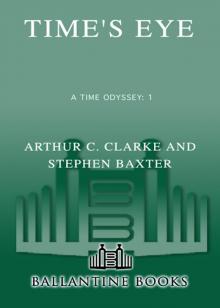 Time's Eye
Time's Eye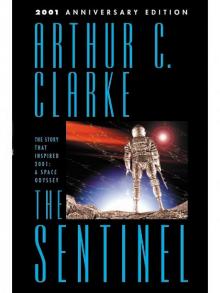 The Sentinel
The Sentinel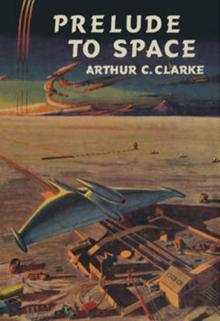 Prelude to Space
Prelude to Space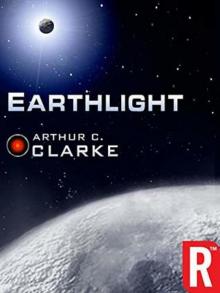 Earthlight (Arthur C. Clarke Collection)
Earthlight (Arthur C. Clarke Collection)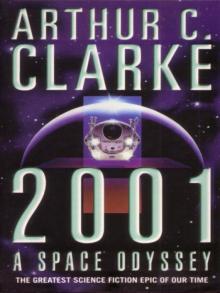 2001: A Space Odyssey
2001: A Space Odyssey Against the Fall of Night
Against the Fall of Night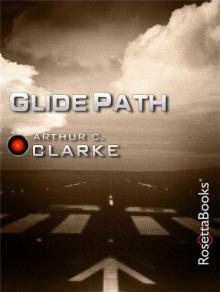 Glide Path
Glide Path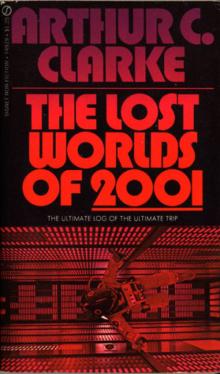 The Lost Worlds of 2001
The Lost Worlds of 2001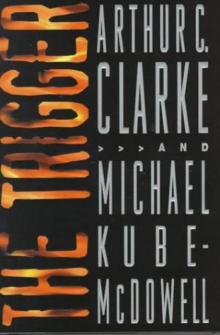 The Trigger
The Trigger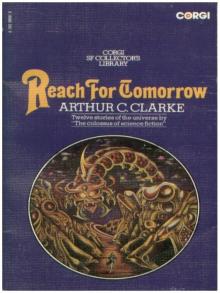 Reach for Tomorrow
Reach for Tomorrow Islands in the Sky
Islands in the Sky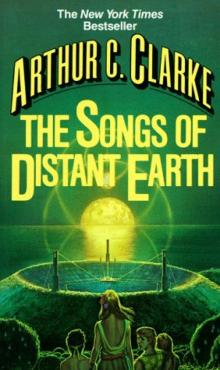 The Songs of Distant Earth
The Songs of Distant Earth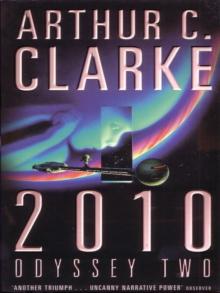 2010: Odyssey Two
2010: Odyssey Two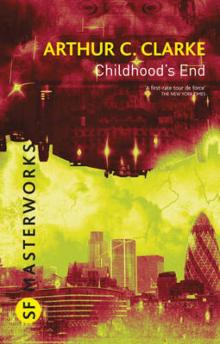 Childhood's End
Childhood's End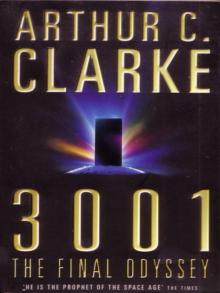 3001: The Final Odyssey
3001: The Final Odyssey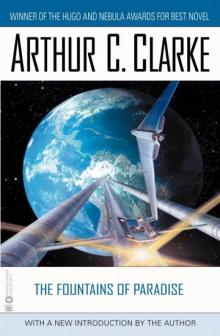 The Fountains of Paradise
The Fountains of Paradise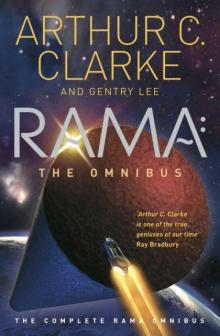 Rama: The Omnibus
Rama: The Omnibus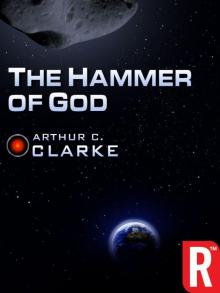 The Hammer of God
The Hammer of God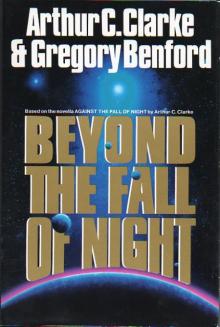 Beyond the Fall of Night
Beyond the Fall of Night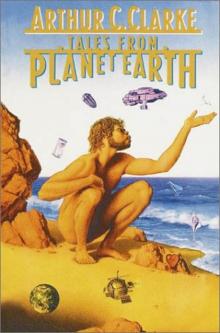 Tales From Planet Earth
Tales From Planet Earth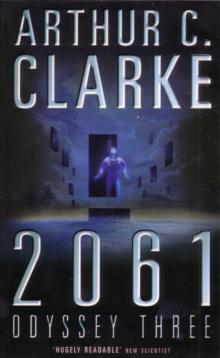 2061: Odyssey Three
2061: Odyssey Three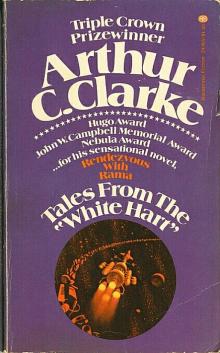 Tales From the White Hart
Tales From the White Hart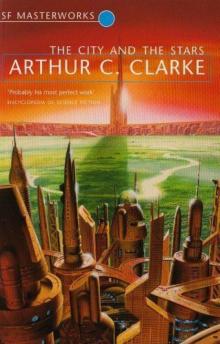 The City and the Stars/The Sands of Mars
The City and the Stars/The Sands of Mars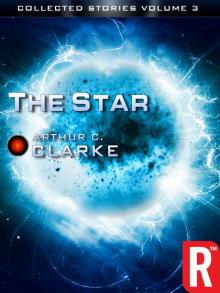 The Star
The Star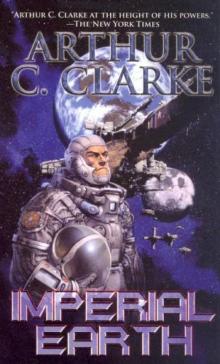 Imperial Earth
Imperial Earth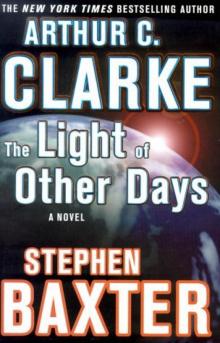 The Light of Other Days
The Light of Other Days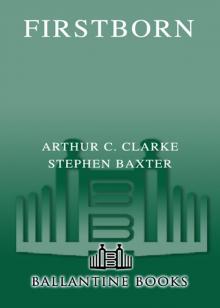 Firstborn
Firstborn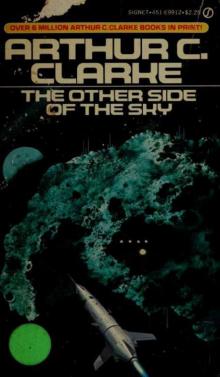 The Other Side of the Sky
The Other Side of the Sky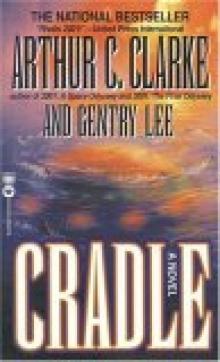 Cradle
Cradle The Wind From the Sun
The Wind From the Sun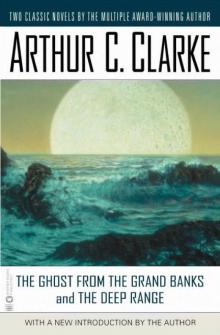 The Ghost From the Grand Banks and the Deep Range
The Ghost From the Grand Banks and the Deep Range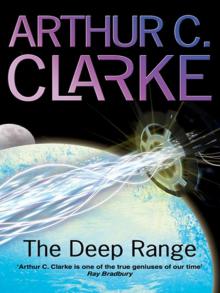 The Deep Range
The Deep Range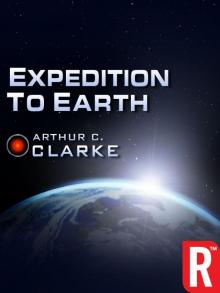 Expedition to Earth
Expedition to Earth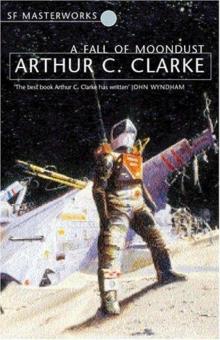 A Fall of Moondust
A Fall of Moondust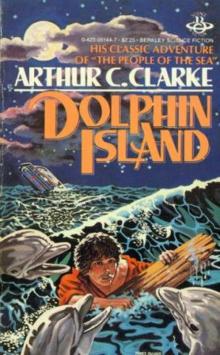 Dolphin Island (Arthur C. Clarke Collection)
Dolphin Island (Arthur C. Clarke Collection)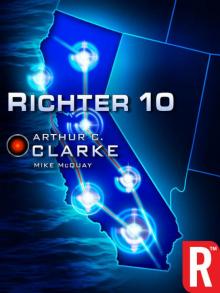 Richter 10
Richter 10 The City and the Stars
The City and the Stars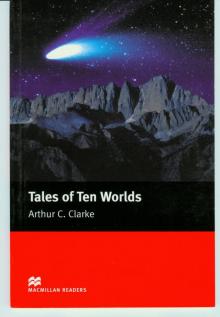 Tales of Ten Worlds
Tales of Ten Worlds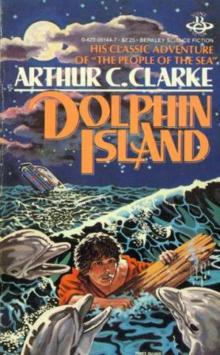 Dolphin Island
Dolphin Island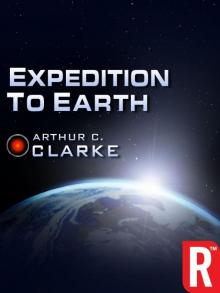 Expedition to Earth (Arthur C. Clarke Collection: Short Stories)
Expedition to Earth (Arthur C. Clarke Collection: Short Stories)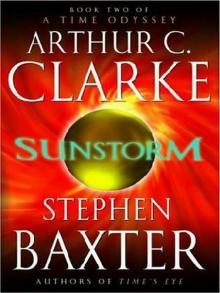 Sunstorm
Sunstorm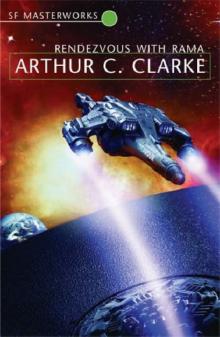 Rendezvous with Rama
Rendezvous with Rama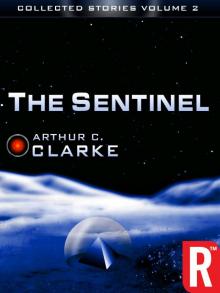 The Collected Stories of Arthur C. Clarke
The Collected Stories of Arthur C. Clarke Trouble with the Natives
Trouble with the Natives Rama Revealed r-4
Rama Revealed r-4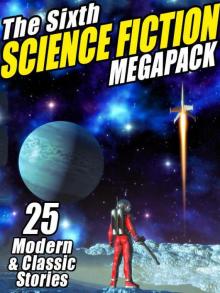 The Sixth Science Fiction Megapack
The Sixth Science Fiction Megapack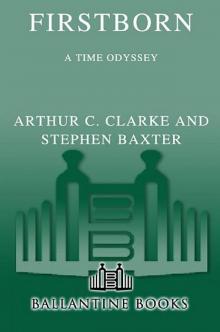 Firstborn to-3
Firstborn to-3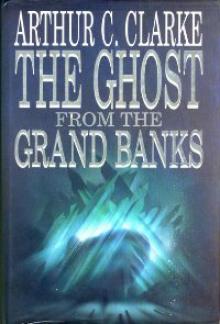 The Ghost from the Grand Banks
The Ghost from the Grand Banks Into the Comet
Into the Comet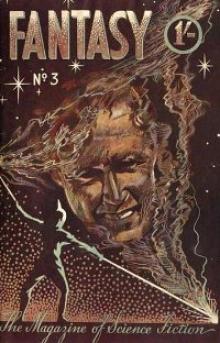 The Fires Within
The Fires Within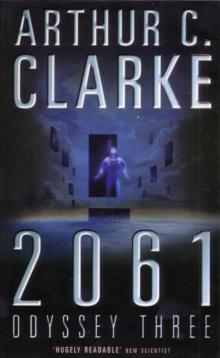 2061: Odyssey 3
2061: Odyssey 3 The Ninth Science Fiction Megapack
The Ninth Science Fiction Megapack The Coast of Coral
The Coast of Coral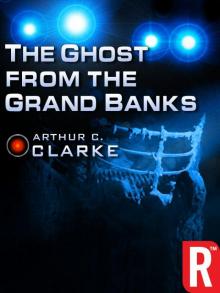 The Ghost from the Grand Banks (Arthur C. Clarke Collection)
The Ghost from the Grand Banks (Arthur C. Clarke Collection) The Space Trilogy
The Space Trilogy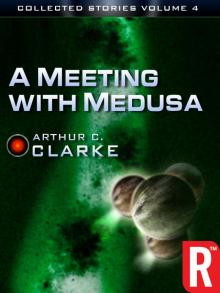 A Meeting With Medusa
A Meeting With Medusa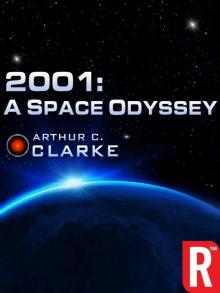 2001: A Space Odyssey (Arthur C. Clarke Collection: The Odyssey)
2001: A Space Odyssey (Arthur C. Clarke Collection: The Odyssey) Islands in the Sky (Arthur C. Clarke Collection)
Islands in the Sky (Arthur C. Clarke Collection)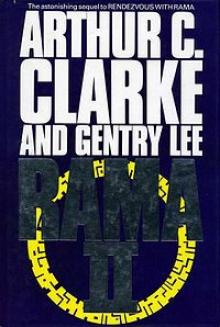 Rama II r-2
Rama II r-2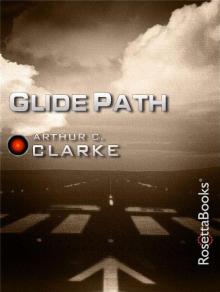 Glide Path (Arthur C. Clarke Collection)
Glide Path (Arthur C. Clarke Collection)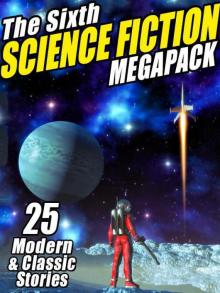 The Sixth Science Fiction Megapack: 25 Classic and Modern Science Fiction Stories
The Sixth Science Fiction Megapack: 25 Classic and Modern Science Fiction Stories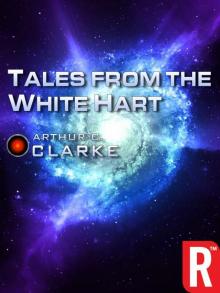 Tales from the White Hart (Arthur C. Clarke Collection: Short Stories)
Tales from the White Hart (Arthur C. Clarke Collection: Short Stories) The Reluctant Orchid
The Reluctant Orchid